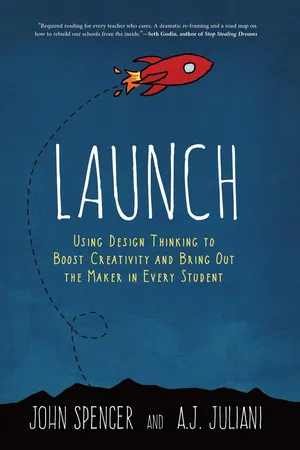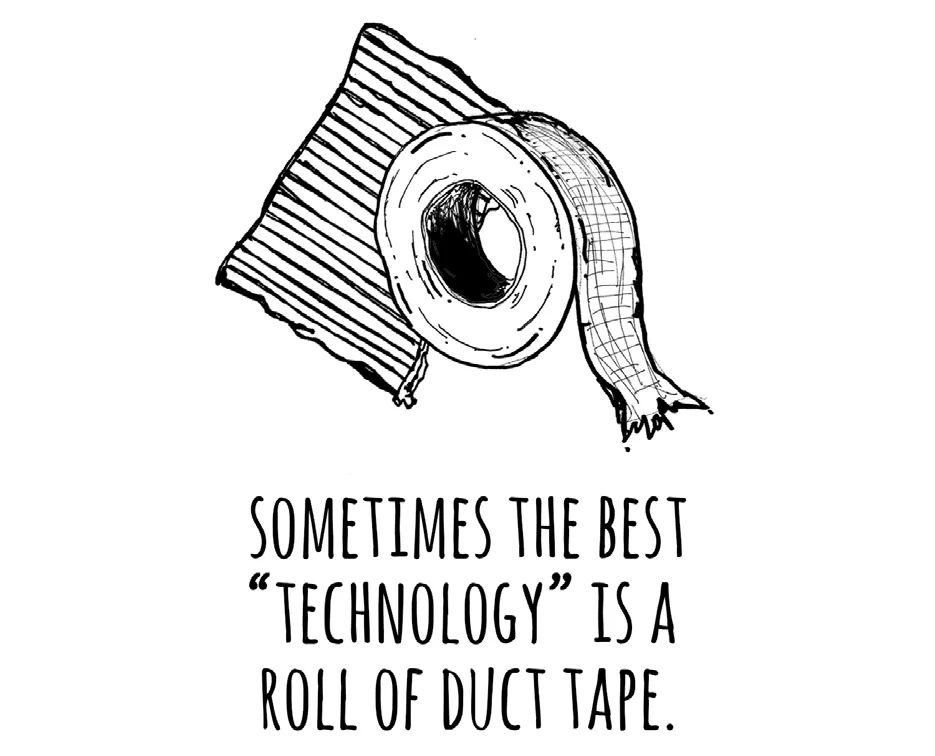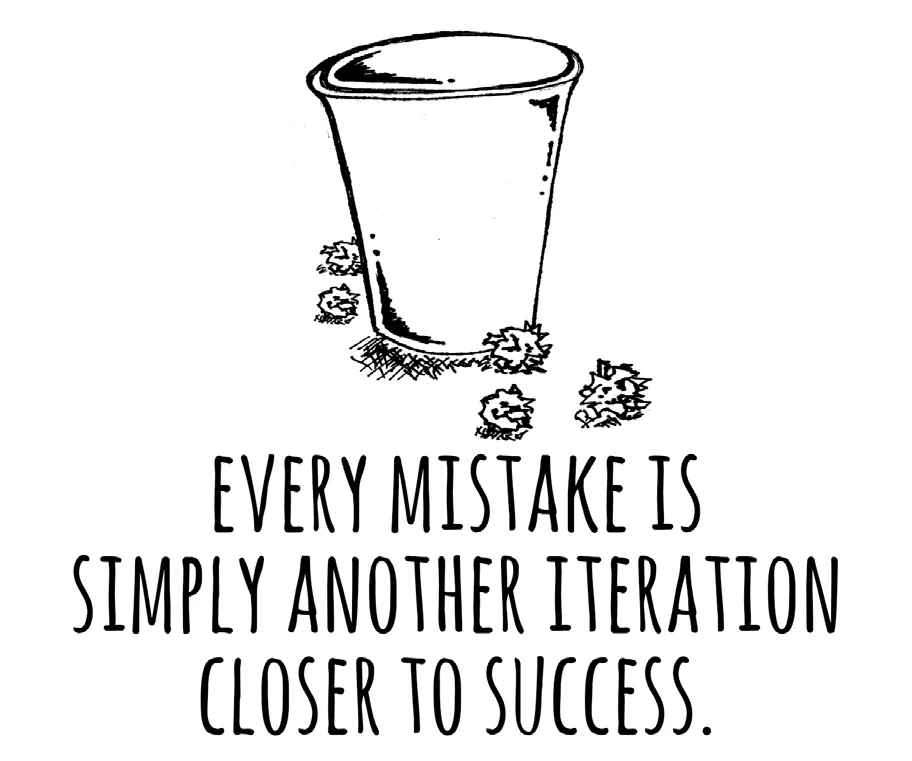
eBook - ePub
Launch
Using Design Thinking to Boost Creativity and Bring Out the Maker in Every Student
- English
- ePUB (mobile friendly)
- Available on iOS & Android
eBook - ePub
Launch
Using Design Thinking to Boost Creativity and Bring Out the Maker in Every Student
About this book
Something happens in students when they define themselves as makers and inventors and creators. They discover powerful skills—problem-solving, critical thinking, and imagination—that will help them shape the world’s future … our future. In LAUNCH, John Spencer and A.J. Juliani provide a process that can be incorporated into every class at every grade level... even if you don’t consider yourself a “creative teacher.” And if you dare to innovate and view creativity as an essential skill, you will empower your students to change the world—starting right now.
Frequently asked questions
Yes, you can cancel anytime from the Subscription tab in your account settings on the Perlego website. Your subscription will stay active until the end of your current billing period. Learn how to cancel your subscription.
No, books cannot be downloaded as external files, such as PDFs, for use outside of Perlego. However, you can download books within the Perlego app for offline reading on mobile or tablet. Learn more here.
Perlego offers two plans: Essential and Complete
- Essential is ideal for learners and professionals who enjoy exploring a wide range of subjects. Access the Essential Library with 800,000+ trusted titles and best-sellers across business, personal growth, and the humanities. Includes unlimited reading time and Standard Read Aloud voice.
- Complete: Perfect for advanced learners and researchers needing full, unrestricted access. Unlock 1.4M+ books across hundreds of subjects, including academic and specialized titles. The Complete Plan also includes advanced features like Premium Read Aloud and Research Assistant.
We are an online textbook subscription service, where you can get access to an entire online library for less than the price of a single book per month. With over 1 million books across 1000+ topics, we’ve got you covered! Learn more here.
Look out for the read-aloud symbol on your next book to see if you can listen to it. The read-aloud tool reads text aloud for you, highlighting the text as it is being read. You can pause it, speed it up and slow it down. Learn more here.
Yes! You can use the Perlego app on both iOS or Android devices to read anytime, anywhere — even offline. Perfect for commutes or when you’re on the go.
Please note we cannot support devices running on iOS 13 and Android 7 or earlier. Learn more about using the app.
Please note we cannot support devices running on iOS 13 and Android 7 or earlier. Learn more about using the app.
Yes, you can access Launch by John Spencer, A.J. Juliani in PDF and/or ePUB format, as well as other popular books in Education & Educational Psychology. We have over one million books available in our catalogue for you to explore.
Information

Chapter 1
We Need Creative Classrooms

Never believe that a few caring people can’t change the world. For, indeed, that’s all who ever have.
– Margaret Mead
You’ve seen them. The most successful people in the world aren’t defeated by change; they thrive on it. They build solutions and problem-solve on the fly. They make products that serve thousands, even millions, of people. They are creative.
And their creativity helps them navigate new technology, new problems, and new environments. Their creativity gives them the tool set to succeed in a world where there is no proven path and no guarantee that anything will stay the same.
This is why so many people have pushed for more creative classrooms. It’s why videos about creativity in education go viral. It’s why the Maker Movement has filled schools around the world, inspiring young minds to build, tinker, and play.
Yet, as a classroom teacher or school leader, you know that after years of honing standardized, formulaic processes, making the shift to innovative teaching and learning is not as easy as snapping your fingers and saying, “Voilà! Let’s put creativity back into our schools!”

When we talk with teachers around the world about creativity, here’s what we hear:
- “Yes, I want my students to be creative, but I don’t have enough materials. Do you know how much that technology and maker equipment cost? My school doesn’t have the funds for that!”
- “How are we supposed to be doing creative work when following a scripted curriculum? It seems impossible to cover all the standards and prepare my students for these assessments, let alone give them time to create and make.”
- “I see all of these examples of creative work students are doing on Twitter, blogs, and education conferences, but I don’t know how to actually pull that off in my classroom. I’ve never been trained on these methods, and it seems hard to make it all work smoothly.”
- “I’ve done creative projects and innovative learning in my classroom before, and I’ve gotten into trouble for it. I’ve had parents saying I’m not teaching. I’ve had principals say my classroom was a mess. I don’t have the support and permission from my school to do this type of creative work.”
- “I know that my students should be doing project-based learning, making, and creating, but I’m just not a creative person. I’m a good teacher, but I don’t think I can keep coming up with all kinds of creative ideas for my students.”
- “My students are too young to be designing things. We should really just focus on the fundamentals.”
- “Creativity is important, but I don’t know if that would work in my subject area.”
We want to say it loud and clear: We hear you! These issues are real. Change is often difficult, confusing, and even painful. But we also know that our world is changing. With the proliferation of digital devices, we now have the ability to connect to the world anywhere at any time. We now carry around powerful devices that allow us to create content that had previously been costly and cumbersome.
In the past, we heard about the “digital divide” between those who had access to technology and those who didn’t. We are now seeing a new divide emerge — a Creative Chasm between those who passively consume and those who actively create. We see it with the students who spend hours watching videos on their phones, while a few bold students create their own YouTube channels where they film, edit, and launch to an authentic audience. We see it with students who download games, while a few students design their own video games.
Our current model of schooling amplifies this Creative Chasm. From the bell schedule to the grading system to the lesson planning and pedagogy, our students inhabit factory-styled schools. Phrases like “content delivery” and “delivering a lesson” treat education as a commodity to be collected and then used in the future. This model might have worked in developing compliant factory workers. So here we are now, well into the twenty-first century. The factories are gone. The jobs have moved overseas. Yet, this industrial school model remains.
Here’s what happens: students grow up immersed in a consumer culture and then attend schools where they consume rather than create knowledge. The chasm widens and students graduate without the creative capacity to navigate the ever-changing landscape of a globalized economy. On a more personal level, they miss out on the deeply human joy of designing and making.
How do we bridge this divide? How do we create innovative spaces where all students can thrive? How do we transform classrooms into bastions of creativity and wonder? And how do we do this when we have limited resources, scarce time, and the constant bombardment of high-stakes testing? These challenges are real, but they aren’t insurmountable. We have both experienced these challenges ourselves as public school educators.
But we’ve also learned something along the way: behind each of these challenges is an opportunity to innovate.
What about the Test?
We live in an era where test scores are mistaken for learning. Teachers are afraid of low scores. They’re afraid of being judged. Innovation is risky in a culture that values compliance over creativity.
We realize that the risk is real. We have experienced this ourselves. However, we also know that design thinking isn’t about abandoning the standards. It’s about raising the standards and challenging students to think at a deeper level. In our experience, when students are thinking creatively, they are fully engaged in their learning. This increased student engagement often leads to more buy-in from students and ultimately deeper learning. Although they still hate the tests, they often view testing as something easy and annoying, because they have already experienced authentic challenges that pushed their thinking to go beyond filling in bubbles.
There is no guarantee that creative thinking will increase test scores, but who would you rather have take a test: a disengaged trained test-taker or a fully engaged creative thinker?
What If There’s Not Enough Time?
You might have a rigid, fast-paced curriculum map. While you would love to do creative projects, you find yourself tossing these into the spare moments you have. So you do a culminating project or a special day before a holiday break. In the process, creativity is a side dish or maybe even dessert, while the “real content” is your main dish. But what if creativity isn’t a dish at all? What if creativity is a totally different way of cooking? What if creativity means you abandon pre-packaged meals and empower your students to be the chefs?
In this book, we’ll explore design thinking as a framework for learning. It isn’t a separate subject that you need to squeeze into an already busy schedule. Instead, it’s a different way of doing things that will actually free up your time.

What If I Don’t Have Enough Resources?
You don’t need a makerspace or a 3-D printer to do creative projects in your classroom. You don’t need the latest gadgets or the most cutting-edge apps. Some of our favorite materials have been duct tape and cardboard or a notebook and pencils. We love technology, but the greatest creative asset you have is the human mind.
We noticed this recently when we launched the Global Day of Design. We developed this as a way for teachers to try out the LAUNCH Cycle in a single day. To our surprise, teachers who had never used design thinking began using the resources months before the official Global Day of Design. Their classrooms became hubs of innovation. These teachers were leading creative movements within their districts.
And yet few of these classrooms were “techie” in the traditional sense. They weren’t one-to-one. They didn’t have 3-D printers. However, they were launching their students in creative projects using whatever resources they had, and the results went far beyond their expectations.

What If I Fail?
You will fail. It’s going to happen. You will have moments when your students get frustrated with the design process. You will have class periods that tank. However, failure is a part of the process for innovative teachers. Each mistake is simply another iteration on the journey toward success.
See, you are a trail blazer and the only way you blaze a trail is by taking risks and failing forward. With design thinking, you have the tools and you have a map. But you are navigating tricky terrain. You are going where the roads aren’t paved and danger lurks at every corner. However, it’s an epic adventure. Your students will be forever changed.
What If I’m Not Very Creative?
When you consider the word “creative,” you might think of a painter, a playwright, an author, a photographer, a filmmaker, or a chef. In other words, you might think of people who make things. I think it’s what we mean when we use a label like “creative type.”
But there is no such thing as a creative type. We are all creative. Every one of us. We just need a bigger definition of creativity.
Yes, creativity involves making things. But it can also mean mashing up ideas in innovative ways. It can mean geeking out on data and finding unique solutions to practical problems. It can mean hacking systems and tweaking things in unusual ways. It can mean exploring ideas and navigating information until you become an expert curator. It can mean designing systems that empower the creative work of others. It can mean creating change in the world by speaking truth and leading movements and interacting with people. See, each of these creative approaches shapes our world in profound ways.
And the more we see the creativity all around us, the more we are able to appreciate the creativity inside ourselves. As a teacher, this means you can work out of your own creative strengths while tapping into the creative potential of your students. In other words, you don’t have to be a “creative type” to have a creative classroom.

The Surprising Truth about Creativity
The problem is that almost everything you’ve heard about creativity in our schools is wrong. These myths about creativity that pop up in business books, TED talks, and the evening news all make it seem like something unattainable — unless you have a big breakthrough idea and are letting your students be free to create at all times.
It’s time we stop listening to the myth that creative work is for the select, gifted few. Let’s work together to break down the barriers that keep us — and our students — from unleashing our creative minds.
Creativity is for all of us. And in this book, we’ll show you how to boost creativity and spark innovation in yourself, your school, in any classroom, and with every student.
As classroom teachers, we each spent hours and hours trying to unlock the creativity inside our students. Through project-based learning, inquiry-based learning, genius hour, independent projects, authentic learning experiences, and challenge-based learning opportunities, we saw firsthand what worked — and what failed.
If you are frustrated by the barriers and obstacles in your way right now, don’t try to put them to the side. Don’t try to hide them. Embrace the frustration and use it to motivate your creative spirit and innovative approach to teaching and learning.
Creativity Is a Process That Requires Structure
The word structure gets a bad ...
Table of contents
- We Believe…
- Chapter 1
- Chapter 2
- Chapter 3
- Chapter 4
- Chapter 5
- Chapter 6
- Chapter 7
- Chapter 8
- Chapter 9
- Chapter 10
- FAQ
- LAUNCH Lesson Plans
- About the Authors